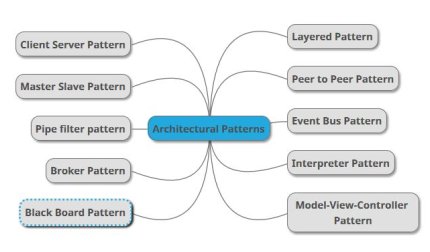Some of the following points provide clarity about an architectural pattern definition:
- It serves as blueprint for your system
- It is general and reusable in nature
- It gives you a functional understanding about how components are going to interact with one another
- Architecture styles are also known as architecture patterns
- Non-functional decisions are formed and divided by the functional requirements
- A well-laid architecture reduces the business risks associated with the building solution and helps you define a clear-cut understanding between business and technical requirements, and it also builds relationships among those components
The following mind map diagram gives different types of Architectural Patterns used in the IT world where you have easily heard about the Client Server Pattern, the Master Slave Pattern, the Model-View-Controller Pattern, and Peer to Peer Pattern:

Design pattern: Functional requirements are defined in it, and it helps you decompose a system into...



